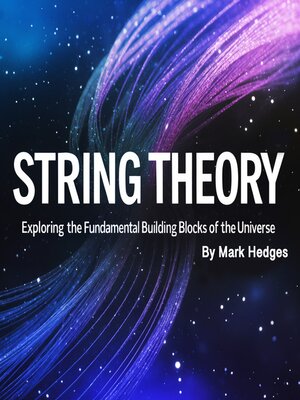String Theory
audiobook (Unabridged) ∣ Exploring the Fundamental Building Blocks of the Universe
By Mark Hedges

Sign up to save your library
With an OverDrive account, you can save your favorite libraries for at-a-glance information about availability. Find out more about OverDrive accounts.
Find this title in Libby, the library reading app by OverDrive.



Search for a digital library with this title
Title found at these libraries:
| Library Name | Distance |
|---|---|
| Loading... |
String theory is one of the most profound and ambitious areas of modern physics, proposing that the fundamental building blocks of the universe are not point particles, as traditionally believed, but rather tiny, vibrating strings. These strings, though incredibly small, can exist in multiple forms, each corresponding to a different type of particle. String theory has the potential to unify the four known fundamental forces of nature—gravity, electromagnetism, the weak nuclear force, and the strong nuclear force—into a single, coherent framework. This vision of a unified theory of everything is one of the most exciting prospects in theoretical physics.
The roots of string theory date back to the late 1960s, when theoretical physicists began exploring the idea that the strong nuclear force, which binds quarks together in protons and neutrons, might be mediated by a one-dimensional object, a string, rather than a point-like particle. Initially, this idea was pursued primarily as a means of explaining certain aspects of quantum mechanics and particle interactions. However, as the theory evolved, it began to offer potential solutions to some of the most vexing problems in physics, including the unification of forces and the nature of gravity.
One of the key features of string theory is the concept of extra dimensions. In classical physics, we live in a universe of three spatial dimensions and one time dimension. However, string theory suggests that the universe may have many more dimensions, hidden from our everyday perception. These extra dimensions are compactified, meaning they are curled up so small that they are effectively invisible at macroscopic scales. The number of extra dimensions in string theory varies depending on the specific version of the theory, but the most popular form, known as superstring theory, suggests the existence of ten dimensions.







